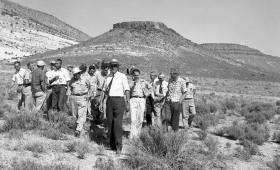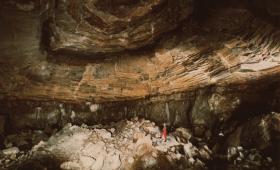Sixty years ago in 1960, at Hughes Aircraft Company in Malibu, California, Thomas Maiman fired his solid-state ruby laser, emitting humankind’s first coherent visible light.
A Look Back

On Jan. 21, 1968, an aircraft accident involving a United States Air Force B-52 bomber occurred near Thule Air Base in the Danish territory of Greenland.

On Dec. 10, 1967, Project Gasbuggy was conducted in a sandstone gas-bearing formation in the San Juan Basin near Farmington, New Mexico.

In 1967, Ronald Reagan, former movie star and then newly-elected governor of California, visited the Lawrence Radiation Laboratory in Livermore, California to tour the facility and become more informed about major ongoing projects, including work on national defense.

On Sept. 19, 1957, the University of California Radiation Laboratory, Livermore detonated the first contained underground nuclear explosion, “Rainier,” into a long tunnel beneath a high mesa in the northwest corner of the Nevada Test Site.

In 1981, a select group of U.S. Army officers visited Lawrence Livermore National Laboratory to participate in a series of nuclear wargames unlike any conducted.

In 1958, the United States conducted a set of nuclear tests, codenamed ARGUS, to determine whether they could interfere with communications and weapons performance.

“Project Dugout” was intended to explore the use of nuclear explosives for large-scale earth excavation projects, such as the creation of harbors and canals.

Physicist, former Lawrence Livermore National Laboratory Director Harold Brown left an indelible mark

The Atomic Energy Commission established the Plowshare Program in June 1957 to explore the peaceful uses of nuclear energy.

